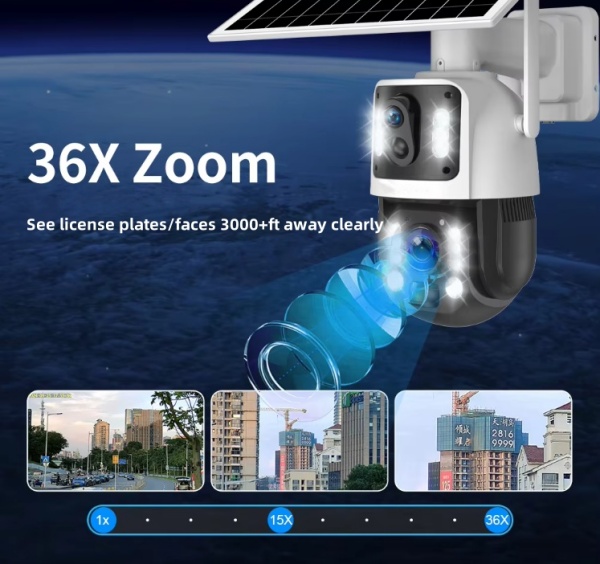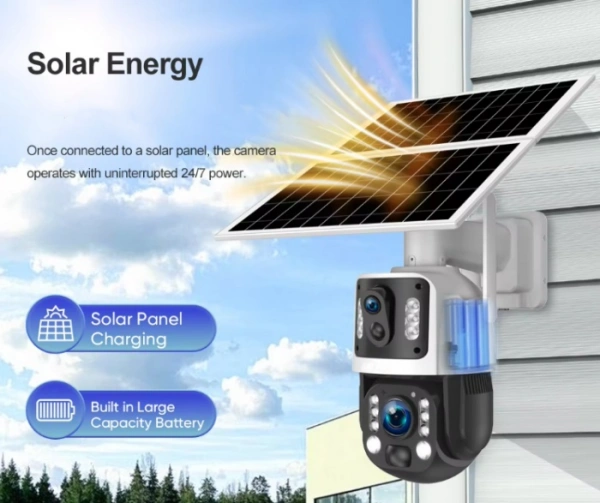What is solar powered security camera?
What are the components of a solar powered surveillance camera?
Ever wondered how solar security cameras work? We break down the essential components, from the solar panel and battery to the camera sensor and connectivity module. Understand the technology behind off-grid surveillance.
Deconstructing the Solar Security Camera: A Guide to Its Key Components
Solar-powered security cameras have revolutionized surveillance, offering a flexible, eco-friendly, and wire-free solution for monitoring homes, businesses, and remote properties. Their ability to operate “off-grid” seems almost magical, but it’s all thanks to a sophisticated ecosystem of components working in perfect harmony.
So, how are these innovative devices actually built? Understanding their composition is key to choosing the right model and appreciating the technology. Let’s break down the core components that make up a typical solar security camera.
The Core Components of a Solar Security Camera
A solar security camera isn’t just a camera with a solar panel attached. It’s an integrated system where each part plays a crucial role in ensuring self-sufficiency and reliable performance.
1. The Solar Panel: The Powerhouse
The most defining feature, the solar panel, is the camera’s personal power plant. Its primary job is to capture sunlight and convert it into direct current (DC) electricity.
Photovoltaic (PV) Cells: The panel is made of multiple photovoltaic cells (usually silicon-based) that generate an electric charge when exposed to photons from sunlight.
Wattage and Efficiency:Panels are rated by their wattage (e.g., 5W, 10W). Higher wattage generally means faster charging. The efficiency of the panel (often determined by whether it’s monocrystalline or polycrystalline) dictates how well it converts light into power, especially in low-light conditions. Monocrystalline panels are typically more efficient and perform better on overcast days.
2. The Rechargeable Battery: The Energy Reservoir
Since the sun doesn’t shine 24/7, a battery is essential. It acts as an energy bank, storing the excess power generated by the solar panel during the day to keep the camera running through the night and on cloudy days.
Battery Type: The vast majority of modern solar cameras use **rechargeable lithium-ion (Li-ion) batteries. These are favored for their high energy density, long lifespan, and ability to hold a charge well.
Capacity (mAh/Wh):Battery capacity is measured in milliampere-hours (mAh) or watt-hours (Wh). A higher number means the battery can store more energy, translating to longer operation without needing a solar recharge. A typical camera might have a capacity ranging from 5,000mAh to 20,000mAh.
3. The Camera Unit: The Eyes of the System
This is the heart of the surveillance function. The camera unit itself is a complex assembly of several critical parts.
Image Sensor and Lens: This duo determines the video quality. The sensor captures light to create the image, while the lens focuses that light. Key specifications include resolution (e.g., 1080p, 2K, 4K) and field of view (the width of the area the camera can see).
Motion Sensor (PIR): To conserve power, solar cameras don’t record continuously. They rely on a Passive Infrared (PIR) sensor to detect motion.
This sensor detects the body heat of people or animals, triggering the camera to wake up and start recording. This is far more energy-efficient than software-based motion detection that analyzes pixels.
Infrared (IR) LEDs for Night Vision: For nighttime surveillance, the camera uses infrared LEDs. These LEDs emit light that is invisible to the human eye but visible to the camera’s image sensor, allowing it to capture clear black-and-white footage in complete darkness. An IR cut filter automatically switches between day (color) and night (black and white) modes.
Processor and Firmware: The onboard processor is the camera’s brain. It manages all operations: processing image data, compressing video, responding to PIR triggers, and handling network communication. The firmware is the software that runs on the processor, defining the camera’s features and functionality.
4. Connectivity Module: The Communication Link
A security camera is only useful if you can view its footage. The connectivity module transmits video data and alerts to your phone or computer.
There are two main types:
Wi-Fi Module: This is the most common type, connecting the camera to your existing home or business Wi-Fi network. It’s ideal for properties that have a reliable Wi-Fi signal reaching the camera’s location.
4G/LTE Module: For true off-grid locations without Wi-Fi (like farms, construction sites, or vacation cabins), 4G cameras are the solution. They have a built-in cellular modem and require a SIM card with a data plan to transmit footage over a mobile network.
5. Data Storage: The Memory
Recorded footage needs to be stored somewhere. Solar cameras typically offer one or both of the following options:
Local Storage (MicroSD Card): A slot for a microSD card allows you to store recordings directly on the device. This is a one-time cost and doesn’t require an internet connection to record, but the footage can be lost if the camera is stolen or damaged.
Cloud Storage: Many brands offer a subscription-based cloud service. Footage is automatically uploaded to a secure remote server. This protects your data from theft and allows you to access it from anywhere, but it usually involves a monthly fee.
6. The Housing and Mounting Bracket: The Protective Shell
All these sensitive electronics are enclosed in a durable, weatherproof housing.
IP Rating: Look for an IP (Ingress Protection) rating, such as IP65 or IP66. The first digit indicates protection against solids (like dust), and the second indicates protection against liquids (like rain and snow). A higher rating means better protection.
Materials: The housing is typically made from high-grade, UV-resistant plastic or metal to withstand harsh weather conditions for years. The mounting bracket is designed for easy and secure installation on a wall, pole, or tree.
7.Built-in BMS protect,the key technology of solar security cameras
How It All Works Together: A Simple Workflow
1. Charge: The solar panel converts sunlight into electricity.
2. Store: This electricity charges the internal battery.
3. Standby: The camera remains in a low-power standby mode to conserve energy.
4. Detect: The PIR sensor detects motion from a heat source.
5. Activate & Record: The camera instantly wakes up, records a video clip, and saves it to the SD card or uploads it to the cloud.
6. Alert: It sends a push notification to your smartphone via the Wi-Fi or 4G module.
7. Sleep: After a set period, the camera returns to standby mode, waiting for the next event.
Conclusion: A Self-Sufficient Surveillance Ecosystem
A solar-powered security camera is much more than the sum of its parts. It is a finely tuned, self-sufficient ecosystem where the solar panel, battery, sensors, and connectivity modules work in concert to provide security without relying on traditional power grids or wiring. By understanding these core components, you can better appreciate the technology and make a more informed decision when choosing the perfect solar camera for your security needs.
Frequently Asked Questions (FAQ)
(Q1) Do solar security cameras work on cloudy days or at night?
A: Yes. The rechargeable battery stores excess power generated on sunny days. A fully charged battery can typically power the camera for several days of normal use (based on motion events) even with no sunlight, ensuring it works through the night and on overcast days.
(Q2) Do I need Wi-Fi for a solar security camera?
A: It depends on the model. Most solar cameras are Wi-Fi based and require a signal to send alerts and stream video. However, if you need a camera for a location without Wi-Fi, you should choose a 4G/LTE solar camera, which uses a cellular data plan instead.
(Q3) How long does the battery last on a single charge?
A: This varies greatly depending on the battery capacity, the number of motion triggers, and the amount of sunlight. With a full charge, most cameras can last from several days to several weeks in standby mode. The solar panel’s job is to continuously top up the battery so it rarely depletes fully.
(Q4) Are solar security cameras difficult to install?
A: No, one of their biggest advantages is ease of installation. Since they are wire-free, you don’t need to run power or network cables. You simply mount the camera and the solar panel in a location with adequate sunlight and connect it to your network via a mobile app.


